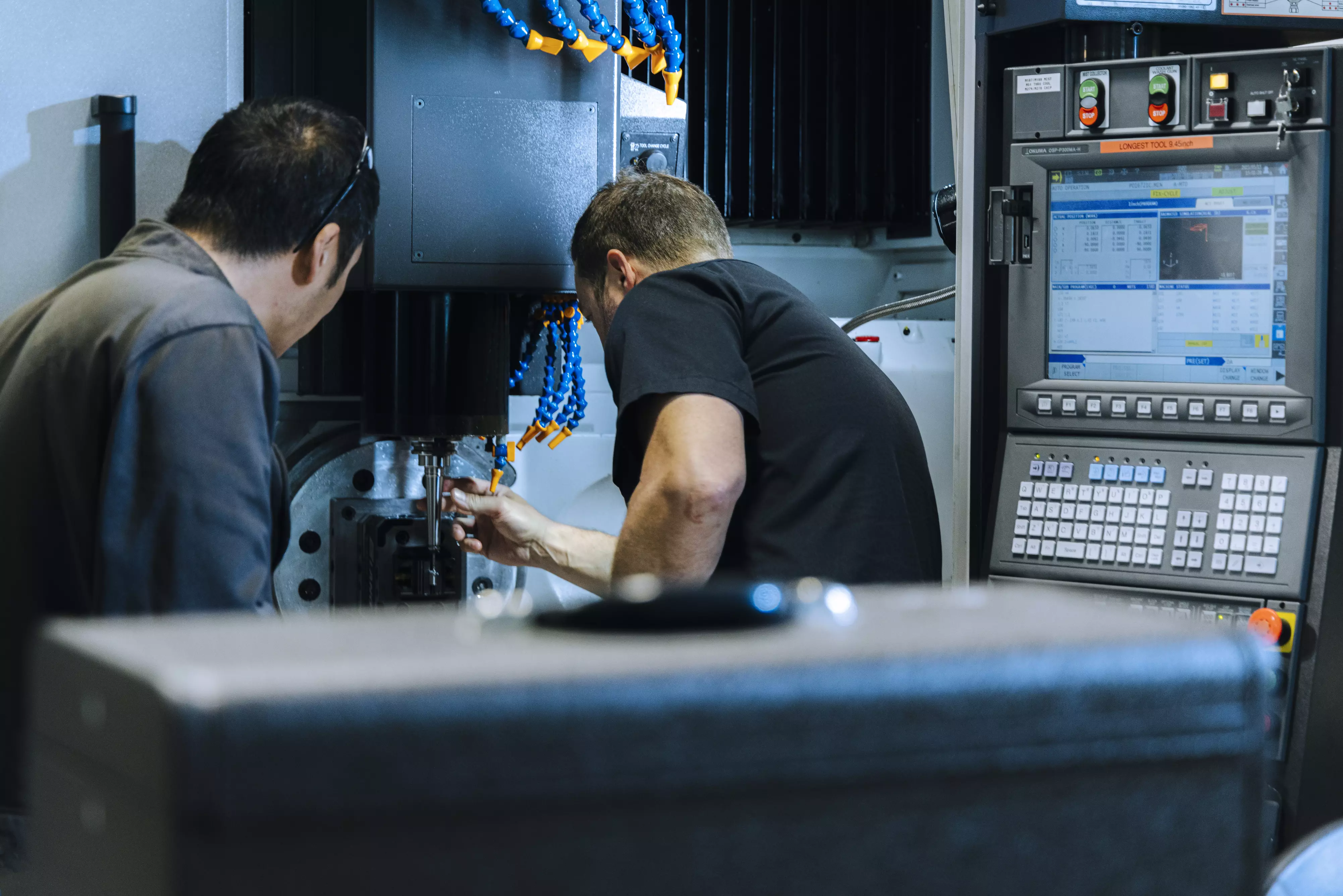Background & Experience
Apprenticeship & Early Career
I’ve always been the kind of kid who took things apart just to see how they worked. School never really clicked for me. I struggled to stay focused and didn’t see myself in a white-collar job. But I thrived in hands-on environments, especially my high school machine shop class. With help from a great shop teacher and guidance counselor, I finished my final credits in a full-time machining co-op program and landed my first job at a local job shop.
I worked my way through a few shops after that, including one with a notoriously tough boss. Those years taught me precision, attention to detail, and what it really means to take pride in your work. I completed my apprenticeship and earned my Machinist Red Seal certification in Canada. That was a big moment for me!
One of the biggest turning points was joining Massiv Die Form, a Canadian manufacturer that builds large cast stamping dies. I finished my apprenticeship there, got hands-on with CNC machine setup, and started to learn programming. I also experienced the kind of camaraderie you only find on a good shop floor. When growth opportunities slowed, I started teaching part-time at the college I’d once attended.
From Massiv to Tesla
A few years later, out of nowhere I got a text from a former colleague at Massiv: “Wanna work at Tesla?” That kicked off my move to Fremont and into the thick of the Model 3 ramp, with what everyone now remembers as the chaos of production hell. I loved it. Fast-paced, high pressure, and between managing the machine shops, I helped launch an internal apprenticeship program with a local college.
Since then, I’ve worked at Apollo Fusion building electric propulsion hardware, stayed through its acquisition by Astra, and joined Neuralink, where I’ve built two shops in two states over the past three years.
It’s been an incredible journey so far built on grit, adaptability, and a love for building cool stuff with great teams.
Machine Shops
Inside Neuralink’s Machine Shops
As head of the shops, my role is to build environments where engineers and machinists can move fast and work closely together. That means designing spaces that prioritize speed, accuracy, and tight feedback loops, so ideas turn into parts as fast and with as little friction as possible.
Each space has dedicated zones for CNC machining, manual work, and inspection. The workbenches, tooling, and layout were chosen to make it easy for engineers and machinists to work together without friction. Given the kind of hardware we build at Neuralink, the shops are optimized for low-volume, high-mix work: one-off parts, fast revisions, and short lead times.

How Neuralink’s Shops Compare to Tesla’s
Tesla does have internal prototype shops that are similar in spirit to what we’ve built at Neuralink, but I wasn’t working in one of them. I was in the stamping department, and our shop there was more focused on repair work and engineering changes—essentially keeping the production tooling alive and functional.
Many companies have internal shops, but what matters more than the company is the role the shop plays. Compared to the production shop I worked in at Tesla, Neuralink’s shops are set up considerably differently. They support R&D and early-stage prototyping, which means the layout, tooling, and workflows are optimized for speed and iteration from the start.
Comparing Traditional Job Shops
Most traditional job shops optimize around repeatability, efficiency, and throughput. The business model is built on maximizing spindle time and minimizing changeovers.
Internal shops like the ones at Neuralink (and Tesla) don’t follow that logic. We’re not chasing billable hours. We’re optimizing for tight feedback loops with engineers, IP protection, and proprietary processes.
Turnaround times are faster because we control the queue and we can pivot in real time. And because we’re embedded with the engineering teams, we don’t just machine parts. We’re part of the design loop, giving a machinist’s feedback to shape the part before it’s finalized.
Day in a Life
Running two internal prototype machine shops in two different states is no joke. Here’s how I’d describe the job if you asked me mid-shift:
Shop flow: Daily operations and workflow oversight are a must. I’m constantly checking the queues with what’s being machined, what’s due, and what’s coming next. I shift jobs around depending on machine availability, who’s on shift, and where the bottlenecks are. Critical parts get bumped to the top and flagged with the engineers.
Team management: I check in with both shops regularly—sometimes live, sometimes async. Depends on the day. I look for skill gaps, coordinate cross-training, and try to mentor where I can. If something feels off with team dynamics or someone’s performance, I address it early before it snowballs.
Planning and scheduling: We run everything through a custom Jira board. It’s a little hacked-together but works well for our scale. I use it to track open jobs, delivery targets, and status across both shops. It gives me a quick read on where things are slipping and helps me stay ahead of capacity issues.
Technical guidance: I review setups, fixturing, and tool paths when machinists need a second set of eyes. Sometimes it’s just a sanity check before hitting cycle start, other times it’s because parts are failing inspection. If there are machine issues or tooling failures, I work with the team to sort them out fast and keep production moving.
Even though we’re a prototype shop, I try to maintain a high bar on quality and documentation. First-article inspections are a big focus, making sure our parts meet the specified tolerances and requirements.
Admin and long-term planning: I keep an eye on the usual metrics (on-time delivery, scrap rates, spindle hours) and manage budgets for consumables, tooling, repairs, and CapEx. I’m always looking for ways to streamline: better tooling, smarter setups, or new equipment that’ll save time or improve quality across the board.
Machines & Equipment
What Do You Look for When Buying a New Mill?
When considering a new machine, I start with the basics: Why do I need it? Is it about increasing capacity, adding a new capability, or filling a gap in our current setup?
From there, I look at:
1) Type of machine – 3-axis or 5-axis? Vertical, horizontal, or a mill-turn?
2) Automation – Will it need automation right away, or should I plan for it later?
3) Work envelope – Check X, Y, and Z travel plus table size. It should fit the largest prototype I expect to make, with some buffer.
4) Spindle – Taper and maximum RPM.
5) Tool changer – Make sure it has enough capacity for our mix of jobs.
6) Brand – Reliability, support, and control system familiarity all factor in.
7) Cost – Total cost including tooling and setup.
8) Lead time – I’ve seen quotes with 10-month delivery times, so that’s a real constraint.
What’s the Most Surprisingly Useful Tool You’ve Bought?
I picked up a standard propane tank cage and repurposed it into a locked storage cabinet for sensitive materials. Only the shop team has the passcode!


